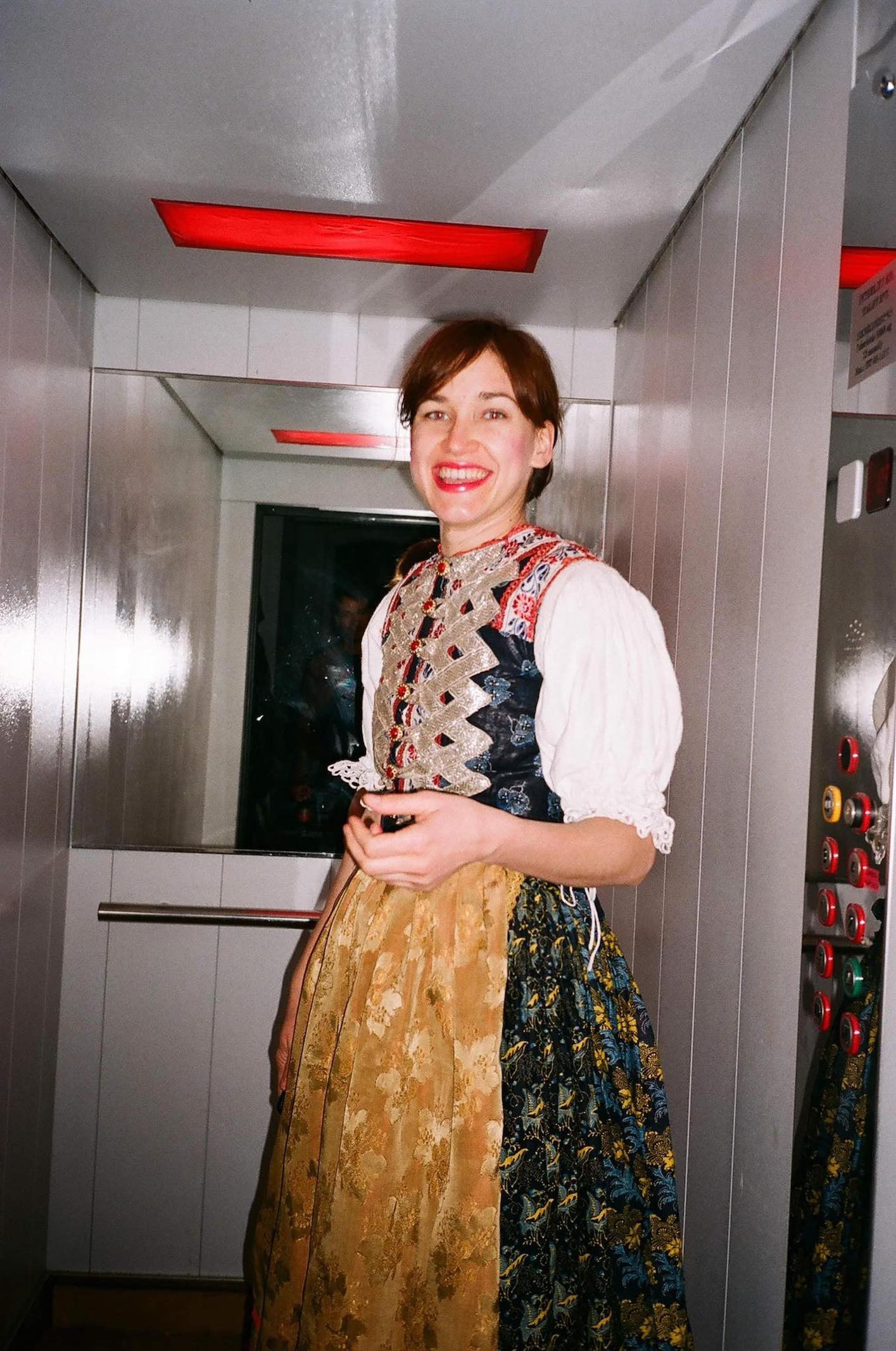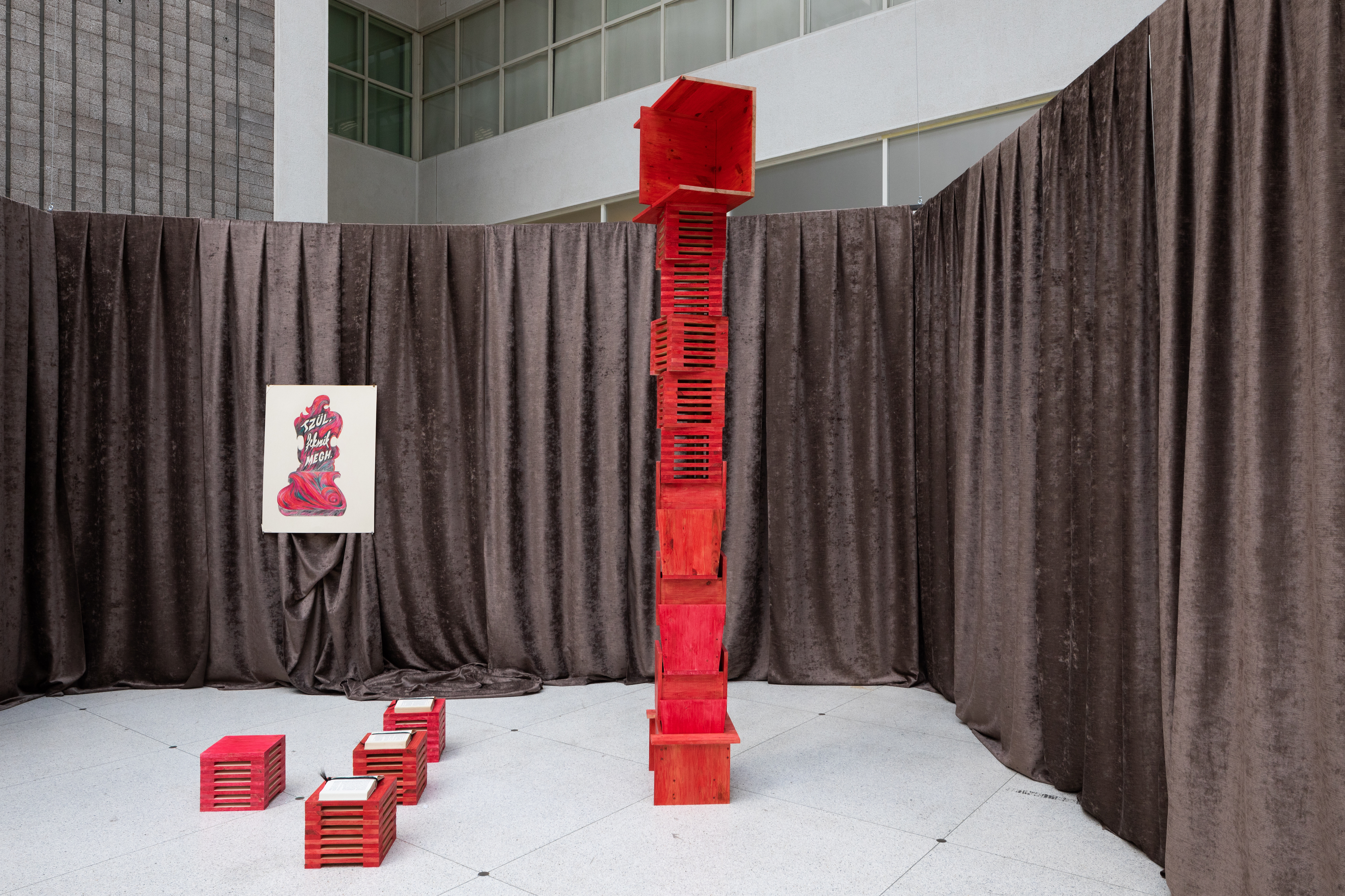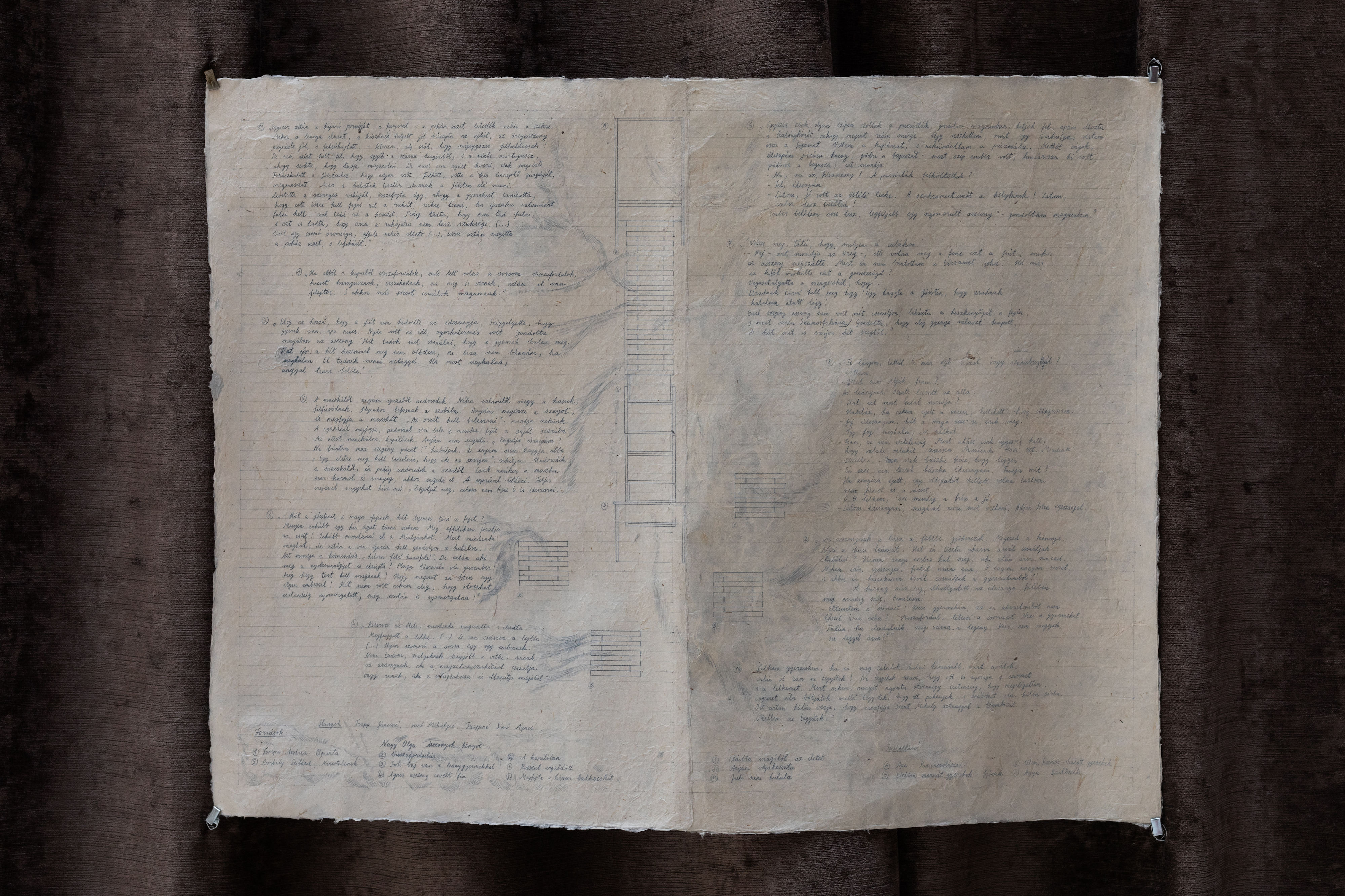Dominika Trapp
Work exhibited in the Trade Fair Palace:
“Lay Him Not Upon Me...” – The Body of a Peasant Woman / 2020 / multimedia installation / audio (8 min 47 s), sculpture, painting (watercolor crayon, paper, 75 x 100 cm), drawing (watercolor pencil, paper, 70 x 85 cm), book, curtain / sculpture designed in collaboration with AU Workshop and Creature Furniture / courtesy of the artist and Horváth Művészeti Alapítvány
“Lay Him Not Upon Me...” – The Body of a Peasant Woman, 2020, Biennale Matter of Art 2024, National Gallery Prague – Trade Fair Palace (c) Jonáš Verešpej
Dominika Trapp (lives in Budapest, b. Budapest (Hungary), 1988) looks into the life of women in traditional rural and patriarchal communities. Women experienced many difficulties, but rarely had a chance to talk about them. They faced many challenges, like marriage issues, childbirth, raising and losing many children, and working hard both in the fields and at home. These difficulties were often kept quiet. Usually, only the closest ones to the women knew about their struggles. Otherwise, their stories remained unwritten. Olga Nagy, an ethnographer from Transylvania, Romania, changed this with her Book of Women. Between 1975 and 1984, she collected the oral histories of peasant women, allowing their voices to be heard. One of these stories is titled Lay Him Not upon Me. This was the dying wish of a woman, who asked that if she dies first, her husband’s body would not be placed upon hers in the grave. She didn’t want him weighing down on her even in her final resting place. Dominika Trapp's installation is inspired by folk culture. It honors this woman and her story. It gives form to her many burdens. Dominika created various chair designs to stand for the 15 children – born, unborn, and deceased – that the woman had had. These chairs form a column, with the oppressive husband on top and the woman at the very bottom – the base of the family. A painting, a drawing and a sound piece go with the sculpture. In these Dominika Trapp shares more examples of women's gestures of resistance in peasant society.

From the artist's archive
Dominika Trapp graduated from the painting department of the Hungarian University of Fine Arts in 2012. Her practice is characterized by a dual interest consisting of, on the one hand, a sensitive painterly approach allowing for intuition and introspection and, on the other, an outward-directed sensitivity fostering dialogues between communities in the pursuit of collective self-knowledge. Through various mediums such as image, installation, and performance, Trapp addresses subjects such as the relationship between tradition and contemporary culture, the status of women in Hungarian peasant communities, the historical context of female eating disorders, and intuitive painting as a potential somatic method for artistic research.
Most recently, she has participated in residency programs at CEAAC in Strasbourg, Art in General in New York, the Erste Stiftung in Vienna, and FUTURA in Prague. In 2020 her solo exhibition was presented at Trafó Gallery in Budapest and at Karlin Studios in Prague. In 2021 she participated in the 14th Baltic Triennial in Vilnius, followed by Manifesta 14 in Prishtina in 2022 and EVA International – Ireland’s Biennial in Limerick in 2023. She was also one of the three recipients of the Esterházy Art Award in 2023. She is currently a multimedia art fellow at the Doctoral School of the Moholy-Nagy University of Art and Design.





